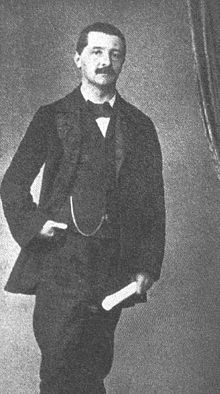Requiem (Bruckner)
| Requiem | |
|---|---|
| by Anton Bruckner | |

The young Bruckner
|
|
| Key | D minor |
| Catalogue | WAB 39 |
| Form | Missa pro defunctis |
| Dedication | In memory of Franz Sailer |
| Performed | 15 September 1849: St. Florian Monastery |
| Published | 1930 |
| Recorded | 1970 |
| Movements | 6 |
| Vocal | SATB choir and soloists |
| Instrumental | orchestra and organ |
The Requiem in D minor, WAB 39, by Anton Bruckner is a setting of the Missa pro defunctis for mixed choir, vocal soloists, three trombones, one horn, strings and organ with figured bass, written in memory of Franz Sailer, the notary of the St. Florian Monastery, who bequeathed Bruckner a Bösendorfer piano. The Requiem was premiered on 15 September 1849 in the St. Florian Monastery, a year after Sailer's death.
Total duration: about 37 minutes
The Requiem is most likely Bruckner's "first truly large-scale composition and probably his first significant work." "[It] is amazing what he achieved, especially if we look at the great double fugue of the Quam olim Abrahae, written at least six years before he even commenced his thorough contrapuntal studies with Simon Sechter!" "The Requiem was Bruckner's first larger-scale composition and also his first work with orchestra. As a highly self-critical seventy-year-old, Bruckner passed judgement on the work as follows: 'It is not bad!'."
There is clear influence of Mozart throughout the work.
[There] are many passages reminiscent of what was even then, in 1848/49, a past age (the very opening points irresistibly to Mozart's Requiem in the same key), and though the very inclusion of a figured bass for organ continuo strikes one as backward looking, there are already several flashes of the later, great Bruckner to come.
[Despite it] is by no means a perfect masterpiece... [it] can be said to be the first full demonstration that the young man was a composer of inestimable promise. ... [The] expressively reticent opening of the opening of the Requiem, with his softly shifting syncopations in the strings ... already faintly anticipates one or two of his own symphonic passages in the two earlier D minor symphonies, for instance Nos. '0' and 3... [We] cannot escape the solemn beauty of this music, which already has the authentic atmosphere of natural genius.
...
Wikipedia
